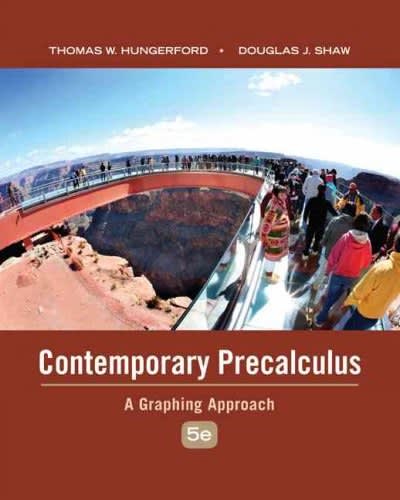
Let's suppose the large arm has a length of 2 meters and rotates clockwise. If we set the central support of the entire ride at the origin, we can describe the end of the arm, at time t seconds, using the parametric equations x : 23in (t), y = 2cos (t) Let's suppose the spokes have a length of 1 meter. In relation to the spoke support, we can describe the position of the bucket/seat (as a function of time) using the parametric equations x = cos (2t) , y = sin (2t) Placing the entire structure at the origin of our x-y plane, the location of the bucket/seat is the sum of both parametric equations (you will learn why when we discuss vectors in calculus 2). In other words, the bucket/seat is in position (x,y) at time t, as described by the parametric equations x = 25in (t) + cos (2t) , y = 2cos (t) + sin (2t) You can graph this equation using GeoGebra. One advantage to using this applet is you can "trace" along the curve as t increases. Set the domain to be zero to 211', this represents one "rotation" around the central spoke. If you watch the desmos animation again, notice that the rider hits a stopping point, then accelerates to the next stopping point, and so on. a) Sketch a graph of the path of a rider using the GeoGebra app. b) Find the first 3 times the rider changes position (comes to a stop); use calculus to answer this question, your answer should not solely come from the graph. Your work: solve an appropriate equation and show all work. All solutions should be in an exact form not a decimal approximation. Hint: From part a, you should notice the rider changes direction at a corner on the graph. Use your knowledge about the derivative at a corner to find these points. c) From the work you did for part b, you should have 4 values of t that correspond to the derivative being undefined, but there are only 3 corners. Why did you have an extra solution? Explain visually by discussing which part of the graph this value oft corresponds. d) Does the rider actually stop at the moment they change direction? In order to answer part d, you need to show the speed is zero at a corner. We can't d use (T: as velocity because y(t} and x(tl describe the position of the rider; thus the . dy . . . units of 5 IS meters per meter not meters per second. You will learn In Calculus 2, - . . (ix 2 dy 2 and In phySIcs, that speed Is calculated as s(t) = [3;] + [3;] . Show that the speed is zero at the first time you found in part b, you don't have to do all 3 times. Show all work of plugging in the t-value and simplifying, don't just plug in to a calculator








